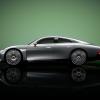Aero changes
#1

Posted 03 January 2007 - 10:45
First, what are the most aerodynamically sensitive areas on the cars? The front wing end-plates and barge boards (particularly the leading edge) are directionally sensitive - the air flow must be head on in order for them to operate properly. The front wing has been lifted further into the 'updraft' of the preceeding car and the interaction of the 'spooned' section with the rest of the wing is another area of sensitivity. The winglets and flip-ups.
The barge boards are reckoned to be responsible for somewhere between 10%-12% of the overall aerodynamic downforce of the car, the winglets and flip-ups obviously are designed to 'tune' the airflow and claw-back downforce lost through the positional changes of the front and rear wings. Getting rid of the bargeboards, simplifying the front wing end plates, ridding the cars of the winglets and flip-ups, dropping the front wing and reducing it's height would all reduce downforce significantly, would reduce aero sensitivty significantly and would drastically reduce the opportunities for clawing back the downforce.
Alot of these the FIA have already outlined within the draft 2008 tech regs - but they have somewhat spoiled it with the stupid split rear wing crap. The general aerodynamic requirements would be pretty much the same - try and direct airflow to the rear wing, the diffuser and the smaller rear wing(s) feeding the diffuser - but would be harder to optimise.
Advertisement
#2

Posted 03 January 2007 - 11:33
And simplify the design of the diffusers, get rid af all those vanes, etc.
I wouldn't mind to see the rear wings extend beyond the rear axle again but restricht their sizes dramaticall. Like for exaple take the Monza wings and prescribe these as the maximim wing dimensions.
Have a look at the Williams FW07 as inspiration.
Henri
#3

Posted 03 January 2007 - 11:41
-Define a maximum angle of attack
-define maximum, total, wing area.
Then we would also get some differences in design. What kills the air for the follower ia mostly the angle of attack, it is absurd at the current cars, allowed only to create the drag that keeps the speed down.
So something has to be made to keep the top speed down - what?
#4

Posted 03 January 2007 - 11:48
Originally posted by Limits
-Define a maximum angle of attack
I think you can't do that, IIRC the angle of attack is relative to the local airflow and not the horizontal ground, so it would be impossible to police.
#5

Posted 03 January 2007 - 12:03
#6

Posted 03 January 2007 - 12:04
People's opinions will mostly be based on aesthetics rather then science.
#7

Posted 03 January 2007 - 12:19
Originally posted by Timstr11
I don't see how their can be a meaningful discussion in this thread, without having some in depth knowledge of aerodynamics.
People's opinions will mostly be based on aesthetics rather then science.
However there is a consensus of opinion that the CDG wing is gimmicky and likely to throw up further problems, and also that the flip-ups have worsened the behaviour of cars in the airstream. It's also true that in the past F1 cars weren't affected to the same extent as they are now. I'd suggest that looking to simplifying the aero is the right way forward.
The worst thing that could happen is that CDG doesn't behave as intended: either cars still suffer unduly from washout, or they get such a boost that overtaking becomes easy. Max should listen to the engineers this time, however I wouldn't be surprised to see him force through CDG on the grounds that agreement couldn't be reached in a timely matter.
#8

Posted 03 January 2007 - 12:22
Originally posted by Beamer
I think you're missing the point here. It's not the actual restrictions that are difficult, it's getting them described and supported by the teams in a manner that prevents abuse/bending/loopholing the restrictions.
But that's what I was saying when I said that the 2008 draft regulations already, to a great extent, cover this - particularly in terms of the winglets and flip-ups.
#9

Posted 03 January 2007 - 12:38
Sure, but it is the aoa that is relatrive to the ground that is a problem. Let them experiment with the local one, as long as they do it without winglets. A minimum wing cord radius is propably required to make the measurments possible.Originally posted by prty
I think you can't do that, IIRC the angle of attack is relative to the local airflow and not the horizontal ground, so it would be impossible to police.
#10

Posted 03 January 2007 - 12:43
Just what is so difficult about making the changes to aero required to make the cars less aero sensitive?
Read Bernolli(or whatever the mags name was), by midpoint you have to take break, because your brains are exploding from all the complexity.
#11

Posted 03 January 2007 - 13:13


Meets all the comments here...
Ricardo
#12

Posted 03 January 2007 - 13:38
The end.
#13

Posted 03 January 2007 - 15:11
Originally posted by MattPete
Champcar tunnels and speedway wings would solve the problem.
The end.
That series has been LESS competitive, with LESS passing, than F1 the past few years........and that is with the much- ballyhooed tunnels.
Passing occurs on tracks that allow it, irrespective of the aero on the cars, as we have seen at select F1 tracks. Many series have engineered cars to be racier, but without the tracks to allow them to exercise their abilities, it is hopeless.
#14

Posted 03 January 2007 - 15:26
E.g. raised noses weren't a result of a rule change, just a clever idea.
And the answer of the "reduced" downforce has been better design, more winglets and steeper angles of attack. So downforce wasn't reduced, it was just exchanged for more drags and cars are now more sensitive than ever.
My guess in the other direction would be that more space, and more effective space for front and rearwing wouldn't result in greatly increased downforce but in less drag and less sensitivity - but I doubt that's easy to foresee. Generally the diffusor seems not to be very sensitive so I'd allow a bigger space for the diffusor to be more effective relative to the other wings.
#15

Posted 03 January 2007 - 16:04
+improved rolling safety
+better look
+less aerodynamic influence between chassis and tyre
+increased drag
#16

Posted 04 January 2007 - 10:38
#17

Posted 04 January 2007 - 11:34

















